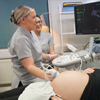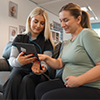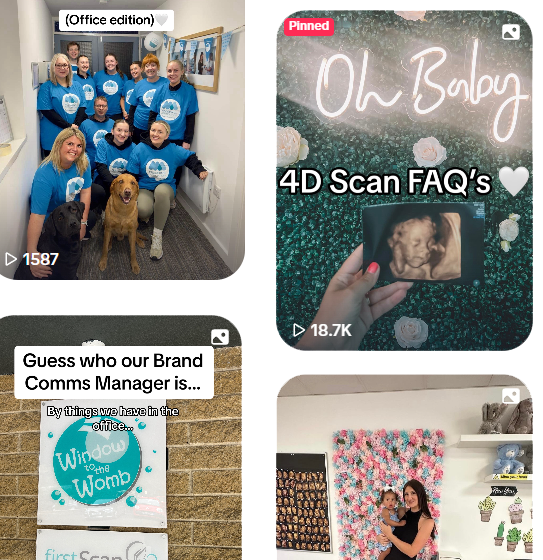At Window to the Womb, we believe every birth story is valid, beautiful, and deserving of support. Whether your caesarean is planned or becomes necessary later in your pregnancy journey, knowing what to expect can help you feel more confident and prepared. Here, we break down what happens before, during, and after a C-section so you can focus on what really matters: meeting your baby.
Before Your C-Section
If you have a planned C-section, your healthcare team will usually schedule the procedure between 39 and 40 weeks of pregnancy, unless there’s a medical reason to do it earlier. You’ll be invited to a pre-operative appointment to discuss the procedure, sign consent forms, and have necessary blood tests.
Key things to know:
- You’ll be advised not to eat or drink for several hours before the operation.
- You’ll likely be given a spinal or epidural anaesthetic so you’re awake but won’t feel pain.
- You can usually have your birth partner with you in the theatre.
To learn more about what to expect from your C-section, visit the NHS C-section guide.
Want peace of mind ahead of the big day? Book a private reassurance scan with us anytime between 6 and 42 weeks at www.windowtothewomb.co.uk.
During the Procedure
A C-section is typically quick, lasting about 40-50 minutes. Once the anaesthetic takes effect, the surgeon will make an incision in your lower abdomen and uterus to deliver your baby. Although you won’t feel pain, you may feel pressure or tugging.
What to expect:
- A screen will usually be placed across your abdomen so you won’t see the surgery.
- Your baby is usually born within the first 10 minutes. Many women want to watch the birth of their baby and you have the right to request the screen to be further down so you can see. Ask your midwife about this option.
- You may be offered skin-to-skin contact almost immediately, depending on your and baby’s health.
After the Birth
During and after a C-section, you may receive injections for pain management, to prevent blood clots, and to encourage uterine contractions, with the most common being for pain relief (spinal or epidural anesthesia) and blood clot prevention (heparin injections).
After the birth, you’ll spend some time in the recovery room where staff will monitor you and your baby. Most mums stay in hospital for 1 to 2 days after a C-section.
Recovery Tips:
- Take pain relief as recommended.
- Rest as much as possible and accept help when it’s offered.
- Avoid heavy lifting or strenuous movement for at least six weeks.
- Keep your wound clean and dry, and follow any aftercare advice given by your midwife.
Emotionally, it’s perfectly normal to feel a wide range of emotions post-birth. Whether your C-section was planned or unplanned, support is available. The NHS postpartum recovery guide has additional helpful advice for physical and emotional recovery.
Your Journey, Your Choice.
Choosing or needing a C-section doesn’t make your birth story any less powerful. At Window to the Womb, we’re here to walk alongside you and empower your journey – offering private scans, expert care, and expert reassurance from 6 to 42 weeks.
Ready to check in on your baby? Book your private pregnancy scan today at www.windowtothewomb.co.uk













 Packages & Prices
Packages & Prices  Important Info & Policies
Important Info & Policies  Your Scan
Your Scan